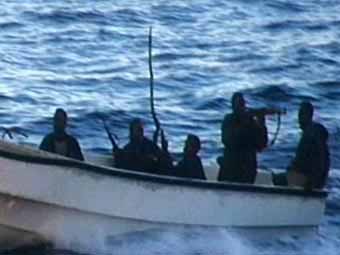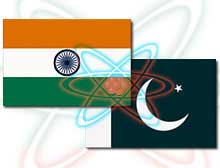(NSI News Source Info) December 2, 2008: With the maiden flight on November 28 of China"s first domestically developed regional jet aircraft, the flight test program for the GE-powered ARJ21 aircraft is now underway. 

The ARJ21 manufacturer, Commercial Aircraft Corporation of China, LTD (COMAC), deemed the aircraft"s hour-long first flight as highly successful, reaching altitudes of 9,000 feet.
GE Aviation provides the complete propulsion system for the ARJ21, including two fuselage-mounted CF34-10A engines.
COMAC plans to perform a second demonstration flight later this month, followed by engineering flight tests in early 2009. Also, three additional aircraft will be added to the flight test program next year to support aircraft certification and entry into service in 2010.
COMAC has already taken orders for more than 200 ARJ21 regional jet aircraft and sees a potential market for 850 aircraft over the next 20 years. This represents a potential of more than $4 billion in CF34 revenue for GE Aviation.
"The ARJ21 first flight is a fantastic accomplishment for COMAC," said David Joyce, president and CEO of GE Aviation. "GE and COMAC have developed a strong relationship in recent years, and our technical collaboration on the ARJ21 has been invaluable."
The ARJ21 will seat 70 to 90 passengers, and is designed for Chinese and export markets. The aircraft combines Chinese intellectual property with GE engines, and airborne systems from leading European and North American companies. COMAC selected GE's CF34-10A engine in 2002. Since then, GE and COMAC collaborated closely during the aircraft's detailed design and the aircraft/engine integration phases.
The CF34-10A is part of GE's CF34 engine family, which is the best-selling engine in regional jet aviation. More than 5,000 CF34 engines power business jets and regional jets worldwide. The CF34-10A is about 80 percent common with the CF34-10E, which entered service in November 2005 on the EMBRAER 190/195.
The ARJ21 is part of China's dramatic aviation expansion. Fueled by economic growth, revenue passenger miles have increased significantly. There are currently 50 new airports scheduled for construction within China over the next five years to meet the higher demand.
As a result, feeder and point-to-point traffic could grow 12% annually over the next 20 years. The ARJ21 is being designed to meet China's diverse environment, specifically the hot temperature and high altitude conditions on many routes in Western China. The CF34-10A technology is ideally suited to this aircraft, with thrust to meet performance requirements, and lower-cost, highly-reliable operation.
GE Aviation activities have grown dramatically in China over the past decade. GE is the China airline industry?s largest engine supplier with 1,000 airliners operating in China, powered by engines from GE or CFM International, a 50/50 joint company of GE and Snecma (SAFRAN). GE Aviation, an operating unit of General Electric Company (NYSE: GE), is a world-leading provider of commercial and military jet engines and components as well as integrated digital, electric power, and mechanical systems for aircraft.
GE Aviation also has a global service network to support these offerings. For more information, visit us at www.ge.com/aviation.






 We have been going round the international market trying to see if there is another smaller vehicle – it doesn’t exist. We are spending over £30million to upgrade all our Snatch vehicles on operations to Snatch Vixen, which provides the same level of manoeuvrability with increased protection. These modifications will give the Snatch Vixen the highest levels of protection for its size and weight class, compared to other vehicles out there on the market.
We have been going round the international market trying to see if there is another smaller vehicle – it doesn’t exist. We are spending over £30million to upgrade all our Snatch vehicles on operations to Snatch Vixen, which provides the same level of manoeuvrability with increased protection. These modifications will give the Snatch Vixen the highest levels of protection for its size and weight class, compared to other vehicles out there on the market.

 A group subsidiary of Israel Aerospace Industries, ELTA is a world leader in electromagnetic sensors-based advanced defense systems for radar, electronic warfare, and communications. The order is for the supply of microwave wireless sub-systems for India’s defense radar program. The contract is effective between November 2008 and mid-2010.
A group subsidiary of Israel Aerospace Industries, ELTA is a world leader in electromagnetic sensors-based advanced defense systems for radar, electronic warfare, and communications. The order is for the supply of microwave wireless sub-systems for India’s defense radar program. The contract is effective between November 2008 and mid-2010. 
 Major General Grundevik is now recommending that the Swedish Armed Forces should take new measures including the deployment of Combat Vehicle 90 (CV 90) to Afghanistan. The Swedish Armed Forces have stated in recent weeks that the incidents lie within the threat and risk assessment previously carried out by the Swedish Military Intelligence and Security Service.
Major General Grundevik is now recommending that the Swedish Armed Forces should take new measures including the deployment of Combat Vehicle 90 (CV 90) to Afghanistan. The Swedish Armed Forces have stated in recent weeks that the incidents lie within the threat and risk assessment previously carried out by the Swedish Military Intelligence and Security Service.























